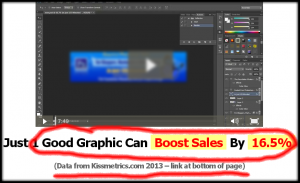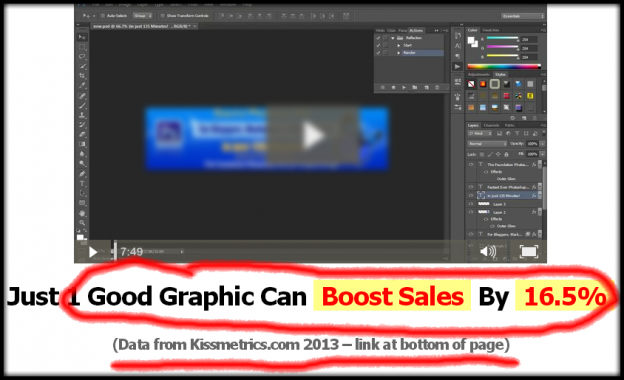A sales page I visited today gave me a good laugh. They prominently quoted a statistic to establish the value of their product (they even linked to the source at the bottom of the page). The quoted statistic made it appear that their product could radically increase sales for people who used it. But, there was one small problem…
[youtube]https://www.youtube.com/watch?v=cbQVla7Q6nc[/youtube]

The KISSmetrics.com article being quoted has some very interesting insights about graphic on web pages. The source of their insights is a study commissioned by David Ogilvy years before the advent of the web. It’s a good read. But…
The section containing the statistic is part of an introduction that is intended to showcase the worthless logic that graphic designers use to convince website owners that they need to re-design the graphics on their site. The statistic has an asterisk (*) after it. If you are a savvy reader, you know that this indicates important information about this claim is buried in the small print.
Unlike the marketer who posted this fact prominently on the sales letter for his product, I scrolled down to find the small print. It revealed something interesting…
Here is what the fine print said:
* Figures are entirely made up for effect. Designers don’t really go this far…but I’m sure some of them want to.
I added the emphasis, but that is the extra information. The quoted STATISTIC IS ENTIRELY BOGUS.
Since they quoted this information prominently and provided a link to the source, I’m sure the website will get revised once somebody points out the problem (or maybe not.) But, somebody other than me will notice this little problem. It will be interesting to see how many people repeat the quote without checking the source. My guess is it will happen a lot because it’s the sort of quotation people selling graphics dream of.
Use caution when quoting statistics – particularly as part of a sales message. Nothing will make you look foolish like quoting incorrect information that is easily disproved. Take the time to verify the source and read that pesky fine print!
